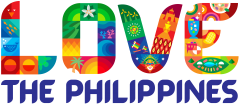The Philippines has more than just stunning white-sand beaches and a culinary experience. The country also has a diverse culture where you can immerse yourself in an experience you’ll never forget.
With a total of 7,641 islands (according to the latest data by the National Mapping and Resource Information Authority), more than 111 dialects spoken, and yes, 110 ethnolinguistic groups, the Philippines is one diverse country to explore especially, if you are the type to dive into a cultural adventure.
In this article, we will explore Mindanao’s best cultural element that deserves its recognition, weaving.
The weaving industry
Weaving is more than just textile; it is an identity and a way of life, especially for the indigenous communities in the country.
Each community has a different expression with distinct weaving traditions and techniques. In fact, that what makes it exciting and unique.
Today, indigenous groups are slowly gaining traction for their traditional weaving practices. Some of them are selling their works in dresses, rugs, and more for tourists to purchase. There are even products worn by famous personalities like Queen Sofia of Spain.
Some are offering an experience a visitor can never forget. Here, they showcase the intense Filipino artistry and unite the people as vital, resilient communities bound by living tradition and colorful textile patterns and motifs.
The Brands
Anthill
ANTHILL or the Alternative Nest and Trading/Training Hub for Indigenous/ Ingenious Little Livelihood seekers has always centered on helping the indigenous groups through their human and community-centered business model. Here, they intersect authentic weaving and contemporary applications to help weaving communities have a sustainable livelihood. Through this, they can preserve and promote what is known as a dying industry to the younger generation.
Once you support their product, you’ll help over 80% of the marginalized sector in the rural areas where a high percentage of poverty and unemployment exists among the indigenous people.
AgSam Fern
The goal of AgSam Fern has always been to create authentic and heritage-rich accessories using weaving. This is to showcase the unique artistry of the indigenous people and cultural communities in Surigao del Sur.
Its founder and social entrepreneur Gina Nebrida Ty has always been fascinated with the artistry shown by the Surigaonon weavers. Hence, this amusement was the root of the collaboration with them to create beautiful pieces that combine Agsam materials and other components found in other parts of the country. Today, Agsam is known for its commercial marketability in the local and global scene while providing sustainable livelihood to the community.
Filip + Inna
Aim to revive the ancient traditions of the Philippines, this line creates pieces to showcase the handmade creations of Filipino artisans. Filip + Inna sells garments designed from the hands of the different indigenous people in the Philippines. Each garment exhibits ancient techniques of traditional weaving, embroidery, and beadwork that only these local artisans master.
Filip + Inna aims to showcase the work of the community and provide jobs to these groups. And through this brand, they aim to introduce Philippine weaving to the world.
Community Immersion
T’Nalak of the T’Boli Community
The late Lang Dulay is one of the best-known weavers coming from this community. Bestowed with the Gawad sa Manlilikha ng Bayan in 1998, she is known as the icon in the weaving industry in the Philippines.
Traditionally, in black, red, and white, this cloth extracts the abaca fibers combed to remove the sap. Then they are connected and knotted from both ends then prepared for the ikat method, also known as resist-dyeing.
The fibers are women using the backstrap loom, then the textile is washed in the river. It is then beaten with a wooden stick then burnished on the surface with a cowrie shell.
T’nalak represents birth, life, marriage, and death. The traditional textile woven by the women in the community exudes the uniqueness of the indigenous group. The textile is often used as blankets and clothing. This is also used in royal wedding ceremonies.
Mabal Tabih of B’laan
Known for their accomplished embroiderers and the tabih, the Blaan practiced traditional weaving reserved for high-status women. The name itself came from the native tubular skirt (tabih) and to weave (mabal)
This weave uses abaca fibers and the back-strap loom to create its design. Then they used the threads and dyed them using a warp tie-dye resist ikat technique and natural dyes from native plants.
It is believed that weaving has a solid spiritual context in the community. Tabih is believed to be a gift from the goddess of weaving named Furalo. The abaca textile used in making the garments is for men and is also used to cover materials like knives.
The Sapatangan Tapestry Weave of Yakan
The Yakan people are known for their impressive weaving. Hence, their technique is considered as one of the oldest and most traditional in producing woven textile.
The sapatangan is a tapestry weave that is best known for its intricate design that creates depth in the patterns like an optical illusion.
Yakan women wear this textile on different occasions, like for everyday wear or heading to the market. They also attend a wedding with this textile, wearing it like a veil. Hence, this textile is part of the Yakan identity.
Immerse into a cultural experience like never before
With the Philippines’ diverse culture, there is a lot to learn from. Like our destinations, weaving has become a part of the identity of the indigenous groups all over the country, especially in Mindanao.
Experience weaving through the T’Boli, B’laan, and Yakan communities today!
